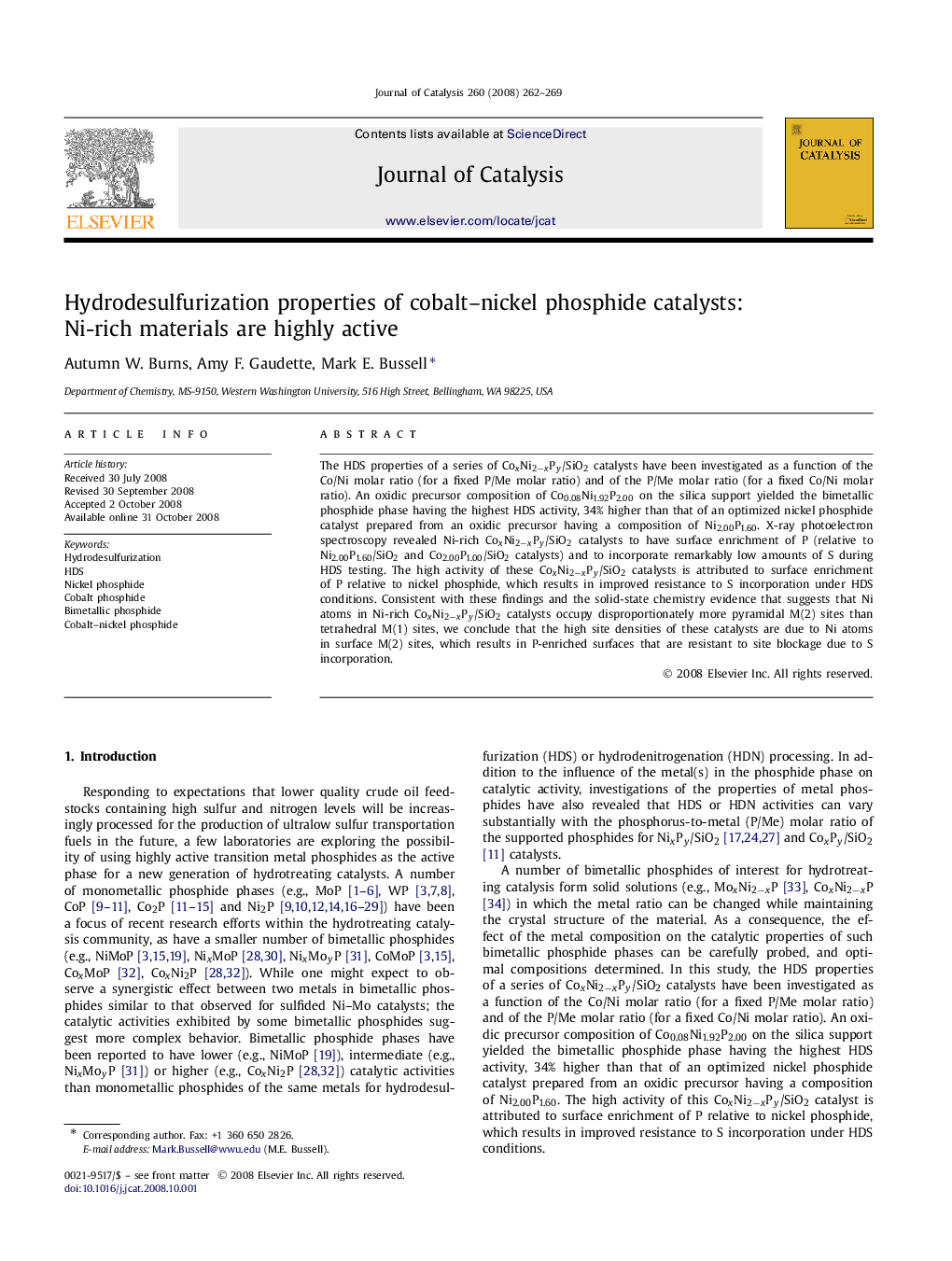| Article ID | Journal | Published Year | Pages | File Type |
|---|---|---|---|---|
| 62735 | Journal of Catalysis | 2008 | 8 Pages |
The HDS properties of a series of CoxNi2 − xPy/SiO2 catalysts have been investigated as a function of the Co/Ni molar ratio (for a fixed P/Me molar ratio) and of the P/Me molar ratio (for a fixed Co/Ni molar ratio). An oxidic precursor composition of Co0.08Ni1.92P2.00 on the silica support yielded the bimetallic phosphide phase having the highest HDS activity, 34% higher than that of an optimized nickel phosphide catalyst prepared from an oxidic precursor having a composition of Ni2.00P1.60. X-ray photoelectron spectroscopy revealed Ni-rich CoxNi2 − xPy/SiO2 catalysts to have surface enrichment of P (relative to Ni2.00P1.60/SiO2 and Co2.00P1.00/SiO2 catalysts) and to incorporate remarkably low amounts of S during HDS testing. The high activity of these CoxNi2 − xPy/SiO2 catalysts is attributed to surface enrichment of P relative to nickel phosphide, which results in improved resistance to S incorporation under HDS conditions. Consistent with these findings and the solid-state chemistry evidence that suggests that Ni atoms in Ni-rich CoxNi2 − xPy/SiO2 catalysts occupy disproportionately more pyramidal M(2) sites than tetrahedral M(1) sites, we conclude that the high site densities of these catalysts are due to Ni atoms in surface M(2) sites, which results in P-enriched surfaces that are resistant to site blockage due to S incorporation.
